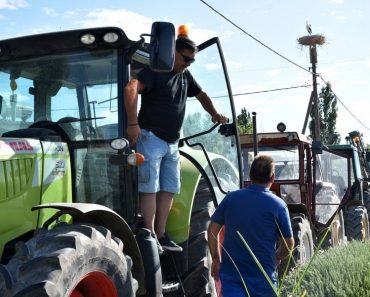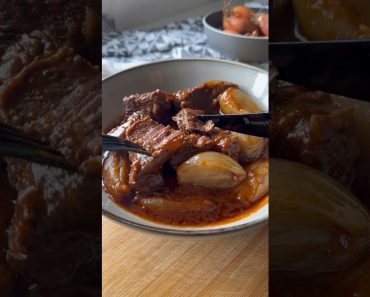Julien Boulard wears a checkered flat cap – the picture of a classic Frenchman from Alsace. Yet he speaks English with a Chinese accent, something he laughs about when it’s pointed out. “I’m 43 and I’ve been living in China since 2003. Half my life, plus a year. So I guess it makes sense,” he says, raising his eyebrows.
Josef Schuller runs the most prestigious wine school in Europe – located, perhaps surprisingly, in Austria. Sarah Jane Evans, an award-winning writer, studied classics and, in addition to English, can speak Ancient Greek with an Erasmian accent. Alex Hunt used to deliver wine in a van for the British retailer Oddbins while studying psychology and philosophy at Oxford. Somehow, that path led to him writing a wine column for Jancis Robinson’s renowned website.
The four of them are seated among a group of 20 Masters of Wine around a U-shaped arrangement of tables, each lined with stemmed glasses. Another tasting is about to begin.
The group – hailing from the US, China, the UK, Austria, Sweden, Norway and Canada – had spent the past week touring vineyards across northern Greece. Invited by the Greek Wine Federation and Enterprise Greece, they sampled native varieties like Xinomavro, Malagousia and retsina. By the time they left, they still hadn’t quite nailed the pronunciation of the grape names – but they were enchanted by the aromas, flavors, and stories behind the wines. And they promised to spread the word about “the people of Xinomavro.”
There are only 420 Masters of Wine in the entire world, active across 32 countries. They’re trained to identify grape varieties and regions using only their senses of smell and taste – and some can even pinpoint a wine’s vintage or vineyard. Becoming a Master of Wine is no mean feat. It takes years of intense study and a notoriously difficult series of exams. “It’s like training for the Olympics,” says Greek Master of Wine Olga Karapanou, who now lives and works in California. But once earned, the title opens doors in the global wine industry.
‘I’m drawn to wines that reflect the place they come from. And it’s wonderful that you have so many indigenous Greek varieties. You can produce every style of wine – you have it all’
We’re at Ktima Kir-Yianni, about to taste Xinomavro PDO Naoussa. Agronomist Haroula Spinthiropoulou has just shared the grape’s backstory with the group. Some of them have only tasted this unique variety once or twice before. For others, it’s still just a name. Greek wines remain hard to find in many countries – and even harder to choose. “It was morning, and the taste of Xinomavro was strange to me – intense, lots of tannins,” Boulard recalls later that evening over dinner, where etiquette allows proper drinking of wine. But everything changed when the older vintages were poured. “The 10-year-old Xinomavro was perfect. A revelation. It’s the kind of wine I’d happily order from a restaurant menu. Before this, I might not even have noticed it.”
The vineyard of 1919
Despite the wine-filled evening before, departure was set for 8 a.m. the next day. The destination: Amyntaio in Florina, another PDO region for Xinomavro, known for its distinct character. Even during summer heatwaves, the cool night temperatures help the vines yield grapes of remarkable quality. We arrive at Alpha Estate, where co-owner Angelos Iatridis leads us up a hill to admire the vineyards and the panoramic view. Spread around us are the village of Nymfaio, Petres Lake, Lake Vegoritida, the village of Xino Nero nestled at the foot of the hill, and in the distance, the old coal mines of Amyntaio. Encircling us are 544 acres of vineyards – quite possibly the largest in Greece.
The sun is already blazing, but before we return to the winery, we pause at a small, historic parcel: a 6.2-acre vineyard planted in 1919. The vines reach 20 meters deep into the earth, yet flourish as if still in their youth. Evans gazes at them with admiration. She tells me she first discovered Greek wine while studying classics at Cambridge. “Back then, a professor brought in tomatoes and retsina for us to try. It was awful,” she says, laughing. Nearly three decades later, on the first day of this trip, she tasted Dakry tou Pefkou (meaning “Tear of the Pine”) – a retsina made from Assyrtiko by Kechris Winery. “What an incredible wine – the resin doesn’t overpower the flavor. What an extraordinary journey you’ve made over the years,” she says, with the characteristically dry wit of an Englishwoman who clearly loves Greece, yet won’t hesitate to critique it. She studied for her Master of Wine qualification while working at the BBC as a food and wine journalist. In fact, the BBC covered the cost of her studies.
She explains that she has friends in Greece and visits often. Still, the vineyard tour through northern Greece left her deeply impressed. “As a Master of Wine, I’m drawn to wines that reflect the place they come from. And it’s wonderful that you have so many indigenous Greek varieties. You can produce every style of wine – you have it all,” she says. “And the food… amazing. We expected Greek salad, but instead, we were served truly remarkable dishes.” Evans has a deep respect for Greece. “Reading Ancient Greek made me a better writer,” she tells me. She believes the country possesses a brand of enormous value. “Just say ‘Greece,’ and people turn their heads to hear what you’re about to say. Everyone is curious about what’s happening here.” That evening, the itinerary called for an overnight stay in Nymfaio. By the time we arrived, night had already fallen.
A challenging variety
Our final wine stop took us to the Gerovassiliou Estate in Epanomi, just southeast of Thessaloniki – and naturally, the focus was on the Malagousia variety. A stunning sunset, sweeping views, and exceptional wine created an idyllic scene. But the real question is whether what’s happening in Greece can gain global recognition, reach international markets, and ultimately translate into successful exports. Olga Karapanou led a discussion with the Masters of Wine about what they’ve seen and tasted.
“People in Norway have a very poor impression of Greek wine. They’ve only tried the cheap, bad stuff,” says the Norwegian representative. “But now, I finally have something I can recommend.” “Malagousia – just trying to pronounce it in a restaurant is terrifying,” jokes Alex Hunt. “Malagousia makes outstanding wines. And if people like something, they’ll learn how to say it,” someone replies. Schuller, the Austrian who runs Europe’s largest wine school, agrees. “Who can pronounce Austrian wine names?” he says. “Yet they’ve become internationally renowned.”
Boulard then takes the floor to express his admiration – especially for Greek wine. This time, his English carries a distinct French accent. “Wine is a product made in many countries and enjoyed in even more. Every one of those countries has a different culture, history, geography and climate – and yet they all produce the same thing. And somehow, it’s always different. A friend of mine once said that wine is like a postcard in liquid form. And he was right. It’s like capturing a moment from a place and sending it across the globe in a bottle. A wine is made in Greece, shipped all the way to China, opened, and suddenly – you taste Greece. That doesn’t happen with any other food. There’s always some level of processing. But with wine, you’re in direct contact with the country where it was made, wherever you are in the world. What Greece has achieved with wine in just a few short years is extraordinary.”









